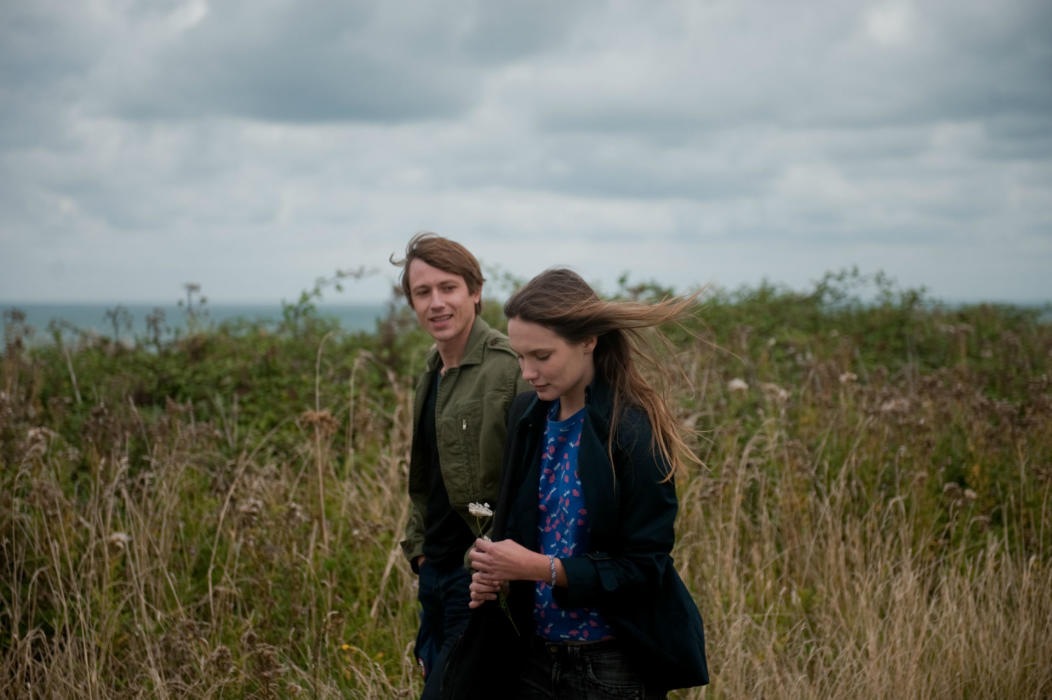Film Review: ‘High Society’

Contemplative understatement marks Julie Lopes-Curval’s fourth feature, “High Society,” a nuanced character study of a demure working-class girl thrust into an upscale milieu of intellectual sophistication when she is accepted into a Parisian school of design. Her ensuing affair with a rebellious upper-class artist, potentially the stuff of melodrama and/or class stereotyping, subtly subverts familiar tropes by interiorizing them as part of an ongoing sentimental education. The result is a triumph of minor-key storytelling, one whose virtues are likely to go largely unnoticed in this era of high-octane emoting, though a less tiredly translated English title might help.
A chance encounter between 20-year-old Alice (Ana Girardot), working in a pastry shop, and rich fashion-house owner Agnes (Aurelia Petit), who praises Alice’s self-made, sea-colored sweater, results in her help in writing a letter to a well-known design school; Agnes’ son Antoine (Bastien Bouillon) recommends a place to live in Paris. Once in the capital, Alice feels overwhelmed and confused by the artistic pretensions and demands of her teachers, her cultural ignorance doubly brought home after she falls for Antoine and moves in with him.
Class misunderstandings soon start to creep into their relationship. Alice thinks Antoine’s genuine friendship with and affection for her working-class mother (Stephane Bissot), ex-b.f. Kevin (Baptiste Lecaplain) and best friend Manon (India Hair) masks condescension if not outright mockery, while Antoine reads Alice’s natural reticence and unfamiliarity with cultural vocabulary as a sign of disinterest in his work. When Antoine drops out of business school to pursue photography, he spends more time on the road, his long absences rendering the couple’s time together more vulnerable and emotion-fraught.
But what fascinates in “High Society” is the complex intermingling of oversimplified assumptions and home truths. Antoine’s continued friendship with Alice’s near and dear triggers Alice’s own conflicted feelings of shame about her lower-class roots. Conversely, although expressive of a genuine appreciation, Antoine’s attraction to Alice’s circle proceeds from a romanticized exoticism, a failure of imagination that refuses to take into account the exigencies that their lifestyles impose. Thus Antoine can pronounce her mother’s dreary project building “beautiful.”
Actually, the concept of beauty is one of the class-based differences that most separates Alice from her new milieu. For although she interprets her difficulty in conforming to others’ intellectual expectations as proof of her lack of culture and education, her own interests in fact constitute an aesthetic as fully formed (if not as clearly articulated) as the bourgeois romanticism it opposes. Thus, her love of wildflowers stems from her preference for things before man “messed with them.” At school, Lopes-Curval shows Alice being constantly belittled for not individualizing her work: When she embroiders a rose, she is criticized for the banality of the flower and its lack of uniqueness (i.e., imperfection). But she seeks the perfect expression of the “roseness” of a rose while her teachers (and Antoine) demand a rose as human self-expression.
But Lopes-Curval perhaps best conveys Alice’s quiet, observant identification with what she sees, unmediated by intellect, in the frequent long shots of her heroine walking by the sea. These shots open and close the film; indeed, the final scene retroactively colors the entire film, bringing together present-tense anxiety and reflective hindsight.
Related stories
'Corrections Class,' 'Chrieg' Top Marrakech Fest
Get more from Variety and Variety411: Follow us on Twitter, Facebook, Newsletter

 Yahoo Movies
Yahoo Movies 